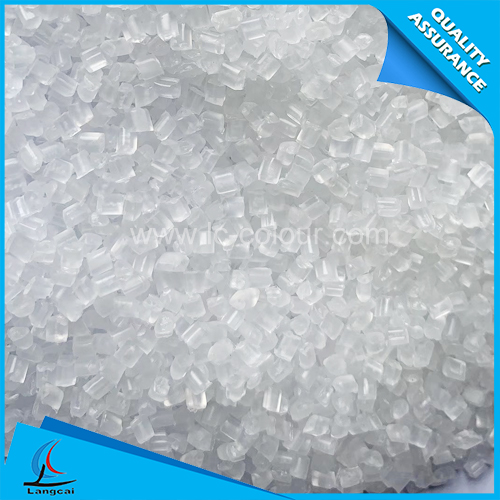- Nonwoven Fabrics
- Tailor Made Masterbatch
- Plastic Masterbatch
- Chemical Fiber Masterbatch
- Functional Masterbatch
- Machinery
- Spunbond PP Nonwoven Masterbatch
- Mono Color Masterbatch
- Liquid Color Masterbatch
- Non-woven Masterbatch
- Polyester Fiber Masterbatch
- Nylon Fiber Masterbatch
- Polypropylene Fiber Masterbatch
- Lab Nonwoven Machine
- Lab BCF Machine
- Dryer
- Filler Masterbatch
- How can the refined cotton industry navigate through the trade fog between China and Japan
- Why choose Mono Color Masterbatches? Three major advantages highlight value!
- The "Symbiotic code" between domestic and overseas markets
- The application advantages of Plastic Masterbatches are remarkable!
- How will the "balanced development of imports and exports" be promoted during the "15th Five-Year Plan" period?
- Why choose Mono Color Masterbatches?
- Phone:00836 - +86-535-8484358
- Email:wendy@ytlc-colour.com
- Address:DALAN INDUSTRIAL PARK, ZHANGXING TOWN, ZHAOYUAN CITY, SHANDONG, CHINA
For China's textile industry, the changes in Indonesia's trade relations with Europe and the United States can be described as "a move that affects the whole body". In terms of export competition, Indonesia may form certain competitive pressure on Chinese textile products in the European and American markets with the new trade conditions reached with the European Union and the United States. For a long time, China's textile industry has occupied an important share in the European and American markets, and now Indonesia is expected to expand its textile product exports in these markets with the help of lower tariff thresholds and more convenient trade rules. For example, in categories such as ready-made clothes and home textiles, Indonesian products may compete with Chinese products for market share with cost advantages.
However, there are opportunities behind the challenges. On the one hand, China's textile industry has significant advantages in technology research and development, product innovation and supply chain integrity. Chinese companies can accelerate the transformation to high-end, intelligent and green, and launch more high-value-added and high-tech products, such as textiles with antibacterial, UV protection and smart wear functions, so as to avoid direct competition with Indonesian products in the low-end and mid-end markets and consolidate and expand their share in the high-end markets in Europe and the United States. Data shows that in the first five months of this year, facing a severe and complex external environment, China's textile and clothing exports reached US$116.682 billion, which is at a historically high level. Among them, textiles showed strong resilience with a year-on-year growth rate of 3.8%, which is a strong proof of the competitiveness of China's textile industry.
On the other hand, from the perspective of industrial chain cooperation, China and Indonesia have always had close ties in the textile field. Indonesia's upstream textile raw materials currently rely mainly on imports from China. In the future, as its industry develops, there will be a strong demand for product localization. Chinese textile companies can take this opportunity to strengthen cooperation with Indonesia in the upstream and downstream of the textile industry chain. For example, in terms of fiber materials and textile machinery, Chinese companies can provide Indonesia with advanced products and technical support to help Indonesia upgrade its textile industry, while also expanding their own market space. Previously, the Textile Industry Branch of the China Council for the Promotion of International Trade organized an entrepreneur delegation to Indonesia to conduct investment research and industry exchange activities to build a bridge for industrial cooperation between the two sides.
Grasp the trend and move forward in cooperation and competition
Overall, the trade-related agreements reached between Indonesia and the European Union and the United States are an important step in its international trade layout. These agreements have brought opportunities for market expansion and cooperation, but also brought with them industry shocks, regulatory challenges and other issues. For the Chinese textile industry, it is necessary to pay close attention to these dynamics, take advantage of its own strengths, actively respond to competition, deepen cooperation with Indonesia and other countries in the textile field, and achieve sustainable development in the adjustment of the global textile industry structure.
Statement: The content of this article is compiled from the Internet, and the copyright belongs to the original author; if there is any infringement, please inform us in time and contact us to delete it.
- Why choose Mono Color Masterbatches? Three major advantages highlight value!
- How can the refined cotton industry navigate through the trade fog between China and Japan
- The application advantages of Plastic Masterbatches are remarkable!
- The "Symbiotic code" between domestic and overseas markets
- Why choose Mono Color Masterbatches?
- How will the "balanced development of imports and exports" be promoted during the "15th Fi
- What are the prominent advantages of Plastic Masterbatches?
- The opening ceremony of the 9th China Textile Intangible Cultural Heritage Conference was
- Explore the performance optimization and efficient coloring of Mono Color Masterbatches!
- What pressure does the United States' promotion of US-India trade cooperation bring to Chi


